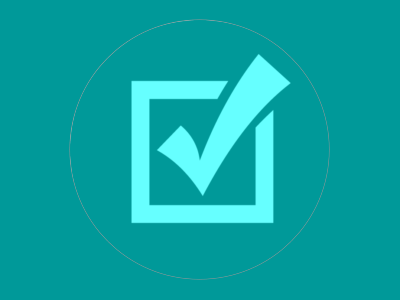Creative Coding Standards
BrainPOP designed Creative Coding with multiple standards in mind, particularly Common Core Mathematical Practice Standards and the Next Generation Science Engineering Standards. As students learn to identify and communicate ideas throughout these projects, they are also refining a number of Common Core ELA College Readiness Anchor Standards for both writing and language. At its core, this project is an introductory study to computer programming and as such is tightly aligned to the Computer Science Teachers Association Standards.
Common Core Standards (CCSS) for Mathematical Practice
College and Career Readiness Anchor Standards for Writing
College and Career Readiness Anchor Standards for Speaking and Listening
College and Career Readiness Anchor Standards for Language
Next Generation Science Standards (NGSS) for Engineering Practices
Computer Science Teachers Association (CSTA) Standards
Common Core Standards (CCSS) for Mathematical Practice
CCSS.MATH.PRACTICE.MP1
Make sense of problems and persevere in solving them.
CCSS.MATH.PRACTICE.MP2
Reason abstractly and quantitatively.
CCSS.MATH.PRACTICE.MP3
Construct viable arguments and critique the reasoning of others.
CCSS.MATH.PRACTICE.MP4
Model with mathematics.
CCSS.MATH.PRACTICE.MP5
Use appropriate tools strategically.
CCSS.MATH.PRACTICE.MP6
Attend to precision.
CCSS.MATH.PRACTICE.MP7
Look for and make use of structure.
CCSS.MATH.PRACTICE.MP8
Look for and express regularity in repeated reasoning.
College and Career Readiness Anchor Standards for Writing
CCSS.ELA-LITERACY.CCRA.W.3
Write narratives to develop real or imagined experiences or events using effective technique, well-chosen details and well-structured event sequences.
CCSS.ELA-LITERACY.CCRA.W.6
Use technology, including the Internet, to produce and publish writing and to interact and collaborate with others.
CCSS.ELA-LITERACY.CCRA.W.8
Gather relevant information from multiple print and digital sources, assess the credibility and accuracy of each source, and integrate the information while avoiding plagiarism.
College and Career Readiness Anchor Standards for Speaking and Listening
CCSS.ELA-LITERACY.CCRA.SL.1
Prepare for and participate effectively in a range of conversations and collaborations with diverse partners, building on others’ ideas and expressing their own clearly and persuasively.
CCSS.ELA-LITERACY.CCRA.SL.4
Present information, findings, and supporting evidence such that listeners can follow the line of reasoning and the organization, development, and style are appropriate to task, purpose, and audience.
CCSS.ELA-LITERACY.CCRA.SL.5
Make strategic use of digital media and visual displays of data to express information and enhance understanding of presentations.
CCSS.ELA-LITERACY.CCRA.SL.6
Adapt speech to a variety of contexts and communicative tasks, demonstrating command of formal English when indicated or appropriate.
College and Career Readiness Anchor Standards for Language
CCSS.ELA-LITERACY.CCRA.L.1
Demonstrate command of the conventions of standard English grammar and usage when writing or speaking.
Next Generation Science Standards (NGSS) for Engineering Practices
Practice 4
Analyzing and interpreting data
Practice 5
Using mathematics and computational thinking
Practice 8
Obtaining, evaluating, and communicating information
Computer Science Teachers Association (CSTA) Standards
1B-DA-07
Use data to highlight or propose cause-and-effect relationships, predict outcomes, or communicate an idea.
1B-AP-08
Compare and refine multiple algorithms for the same task and determine which is the most appropriate.
1B-AP-09
Create programs that use variables to store and modify data.
1B-AP-10
Create programs that include sequences, events, loops, and conditionals.
1B-AP-11
Decompose (break down) problems into smaller, manageable sub problems to facilitate the program development process.
1B-AP-13
Use an iterative process to plan the development of a program by including others’ perspectives and considering user preferences.
1B-AP-15
Test and debug (identify and fix errors) a program or algorithm to ensure it runs as intended.
1B-AP-17
Describe choices made during program development using code comments, presentations, and demonstrations.
2-AP-10
Use flowcharts and/or pseudocode to address complex problems as algorithms.
2-AP-11
Create clearly named variables that represent different data types and perform operations on their values.
2-AP-12
Design and iteratively develop programs that combine control structures, including nested loops and compound conditionals.
2-AP-13
Decompose problems and sub problems into parts to facilitate the design, implementation, and review of programs.
2-AP-16
Incorporate existing code, media, and libraries into original programs, and give attribution.
3A-AP-13
Create prototypes that use algorithms to solve computational problems by leveraging prior student knowledge and personal interests.
3A-AP-16
Design and iteratively develop computational artifacts for practical intent, personal expression, or to address a societal issue by using events to initiate instructions.
3A-AP-22
Design and develop computational artifacts working in team roles using collaborative tools.
3A-AP-23
Document design decisions using text, graphics, presentations, and/or demonstrations in the development of complex programs.
3A-IC-26
Demonstrate ways a given algorithm applies to problems across disciplines.
3A-IC-27
Use tools and methods for collaboration on a project to increase connectivity of people in different cultures and career fields.






